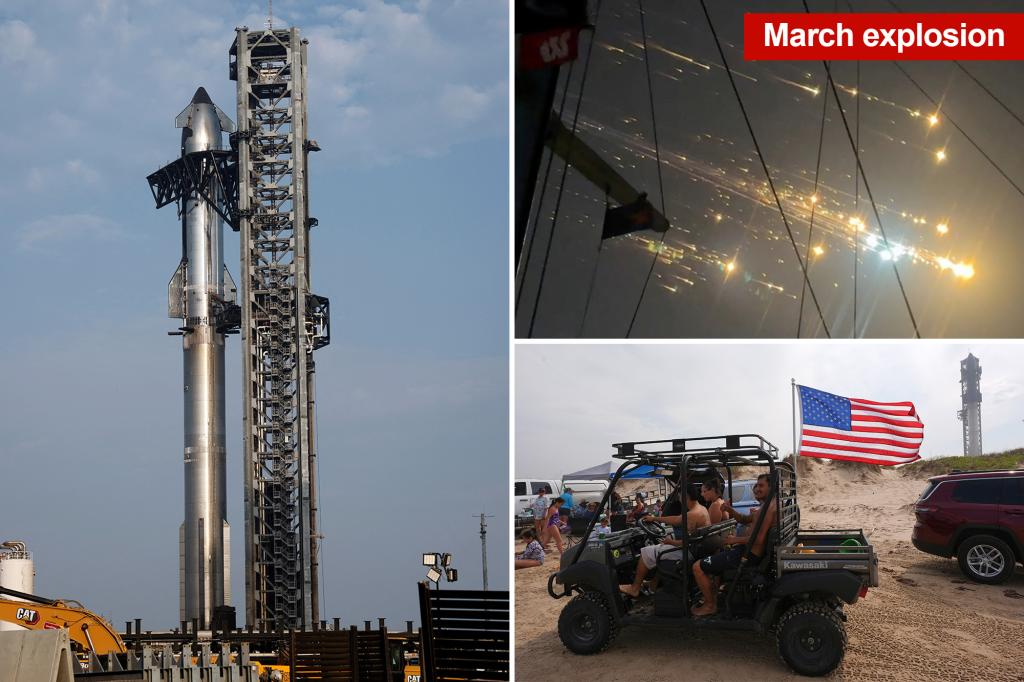SpaceX is preparing for its latest Starship test launch Tuesday following back-to-back failures earlier this year — as Elon Musk hopes to have the rocket ready for a Mars mission next year.
The 400-foot-tall Starship rocket is set to blast off from SpaceX’s Starbase facility in Texas at 7:30 p.m. EST for its ninth test flight, with the company aiming to correct the failures of the last two tests that saw those rockets explode over the Atlantic Ocean.
You can watch the launch live here.
The pressure is on for the launch to succeed as Musk eyes a mission to Mars in 2026 using the Starship rocket to fuel his multi-planetary ambitions.
President Trump’s nominee for NASA administrator, billionaire Jared Isaacman, has said he wants the space agency to focus both on sending astronauts back to the moon and to Mars.
Tuesday’s test will also mark the first time SpaceX is attempt to re-use a Super Heavy booster rocket. The rocket was previously used for the seventh Starship test flight in January.
Unlike with previous missions, SpaceX will not be attempting to catch the Super Heavy booster, with the rocket set to splashdown in the Gulf of Mexico during Tuesday’s launch.
That means one of the most spectacular aspects of the Starship launch — the “Mechazilla” catch, when the booster returns to the launch pad and is caught by the arms on the launch tower — will not happen this time around.
The Super Heavy booster is at the heart of Musk’s ambition as SpaceX hopes to make the 33-engine rocket a reusable asset to make launches faster and cheaper to accomplish.
The rush is on to complete Starship for 2026, when Earth and Mars will be closer together, creating the ideal window for a trip to the red planet.
Musk had boasted about the mission earlier this year, touting that the vessel would be ready with the Optimus robot in tow to explore Mars in late 2026.
“Starship departs for Mars at the end of next year, carrying Optimus,” Musk said in March.
Musk has found his mission aligning with Isaacman, the New Jersey tech billionaire who flew on SpaceX’s Crew Dragon last year for the first-ever civilian spacewalk.
Isaacman has pushed a trip to Mars as a priority for the Trump administration, with the White House calling for $1 billion in funding for efforts to land on the red planet.
SpaceX said it has addressed the issues that made the last two launches a failure, but added that Starship’s initial tests will always be “unpredictable” as they speed their way to developing the perfect rocket.
“By putting hardware in a flight environment as frequently as possible, we’re able to quickly learn and execute design changes as we seek to bring Starship online as a fully and rapidly reusable vehicle,” SpaceX said in a lead up to Tuesday’s launch.
Read the full article here







